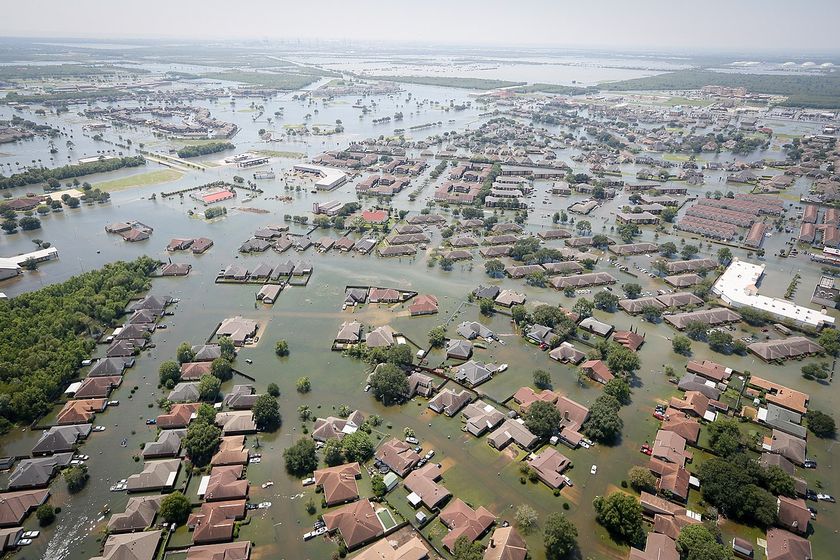- Sections :
- Crime & Public Safety
- Restaurants & Food
- Sports
- More
OPINION: Flood insurance – expensive, but worth it

THE WOODLANDS, TX – According to county documents, in the course of its 53-year history, my house in the Timber Ridge / Timber Lakes neighborhood has flooded four times. I lived in it for the two most recent incidents: the Tax Day floods in April of 2016, and Hurricane Harvey in August the next year. The first time the house flooded, I wasn’t flood insured; apparently the flood zone demarcation line that would have compelled my mortgage company to maintain flood insurance stopped halfway up my yard, and I wallowed in ignorance. The second time, I most certainly was covered by federal flood insurance, and the difference was night and day.
Understandably, I have ensured that my flood insurance has renewed in a timely manner each year since, and thankfully haven’t had to rely on it. Unfortunately, the ever-increasing annual rate – there is no monthly premium; your entire policy must be paid up front – makes it easy to get complacent and mull, “Maybe I wouldn’t need it this year.”
(To put it in perspective, my first year of flood insurance was in the $300 range. My 2025 renewal is about to set me back closer to $1,000.)
The recent Kerr County floods were a metaphorical slap in the face to ‘get over it,’ and to renew my resolve to renew my flood coverage. According to a recent report, less than five percent of the homes in the Kerr County floodplain had flood insurance; more than 98 percent of the homes impacted by the flood had no federal coverage. I speak from experience that the soul-wrenching loss of life and property and possessions is only the first of many life-altering steps for the worse. My only hope is that families, friends, organizations, and concerned individuals will step up and supplement and complement the recovery for these poor souls as they did the times I flooded, particularly the first time when I had no coverage.
Yes, the cost of flood insurance is account-draining and outright debilitating. It will take creative bill-juggling and a lot of mac-and-cheese based meals to meet the payment. But trust me when I say it beats the alternative. Ike, Harvey, Tax Day, Memorial Day, the derecho, and Kerr County have taught us that flooding can happen anywhere, anytime.
In retrospect, I was relatively lucky with both of my floods; I received two feet or less of water in the house both times, making remediation and repair more bearable than if the house had been submerged. FEMA allowed for nine months of hotel living over the long, arduous process of the second flood, a convenience I’ll never take for granted. Many of my possessions I was able to throw onto furniture above the water line, saving a decent proportion of them.
But make no mistake; just one inch of floodwater can cause in excess of $25,000 worth of damage in a home. If the water had risen in my house just one more foot, I would have had to replace my house wiring and toilet systems. The insurance payout I received – and it’s quite the process involving a level of paperwork that makes homebuying look like a lark – barely covered what was lost and damaged as it was; I shudder to think what else I would have had to pay out of pocket had the waters risen more than they had.
True, the federal government does supply disaster relief in certain cases, but it’s never sure and it’s never quick. Before a community is eligible for federal disaster assistance, it must be designated a federal disaster area. This happens in less than 50 percent of flooding incidents. The main form of federal assistance after a federally declared disaster is a loan that must be repaid with interest, typically through the Small Business Association.
Property owners can protect themselves from financial losses by having a flood insurance policy through the National Flood Insurance Program (NFIP). Flood insurance coverage is available regardless of federal disaster declarations. Insurance for contents is also available to homeowners and renters. There is a 30-day waiting period before new policies go into effect, an important consideration during hurricane season.
Statewide, 653,309 policyholders in Texas hold $197 billion in coverage, but at last report 93 percent of Lone Star residents have no flood coverage. Residents can purchase a flood insurance policy if their community participates in the NFIP, no matter their flood risk. Even in areas that are not flood-prone, insurance is a good idea. People outside of high-risk areas file more than 25 percent of NFIP claims.
Coverage is available for residential and commercial buildings and contents:
- Up to $250,000 in building coverage and up to $100,000 in contents coverage for single-to-four family residential structures.
- Up to $500,000 in building coverage and up to $100,000 in contents coverage for five-or-more family residential structures.
- Up to $500,000 in building coverage and up to $500,000 in contents coverage for businesses.
Renters too are encouraged to purchase flood insurance, which is available to them through the NFIP. Even if the landlord has flood insurance, that policy only covers their possessions, not yours.
To purchase a policy as a homeowner, landlord, or renter, contact your insurance company or agent. If you need help finding a provider, go to FloodSmart.gov/flood-insurance-provider or call the NFIP at 877-336-2627.
In addition to the NFIP, flood insurance is also available from some private insurance providers. Ironically, my own insurance is provided through a major private insurance provider – no names, but its mascot is a flightless bird – and it clocks in approximately 25 percent less than if I went through NFIP, due to discounts as a renewing bundled policyholder. I wholeheartedly urge you to call both NFIP and private insurance agents – especially your current providers – to get the best deal. For an agent referral, call 800-427-4661 or visit FloodSmart.gov.
Follow FEMA Region 6 on social media at x.com/FEMARegion6 and on Facebook at facebook.com/FEMARegion6/.
Comment below with your own flood or flood insurance stories or tips.





